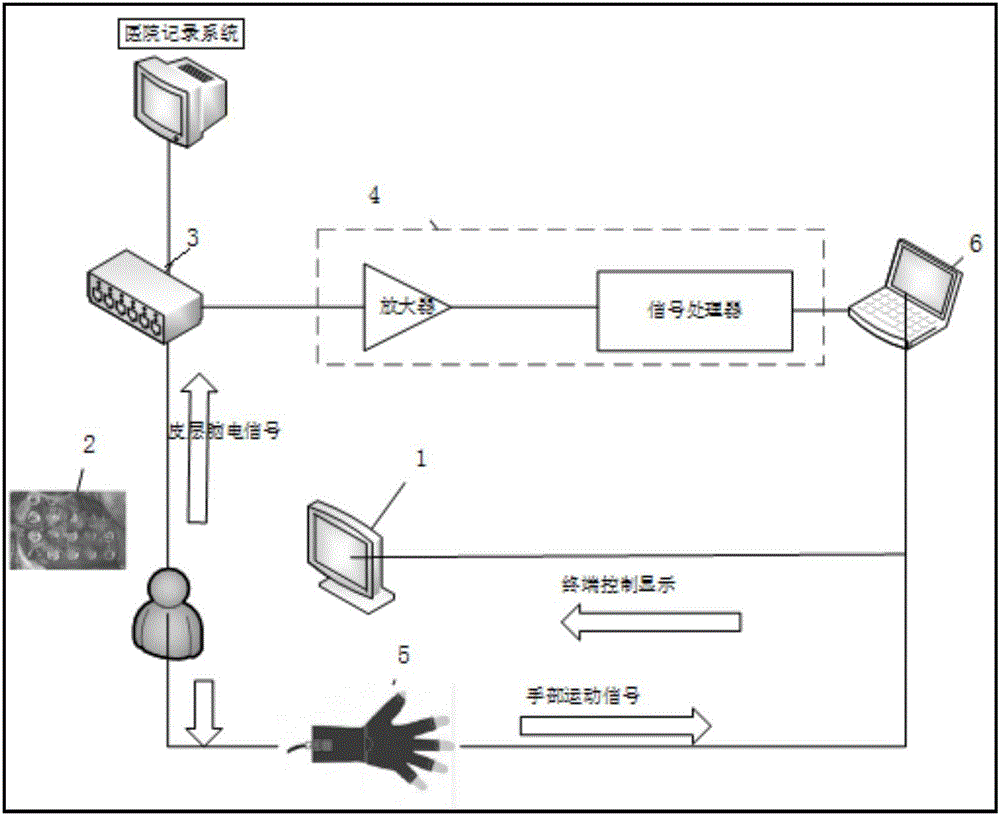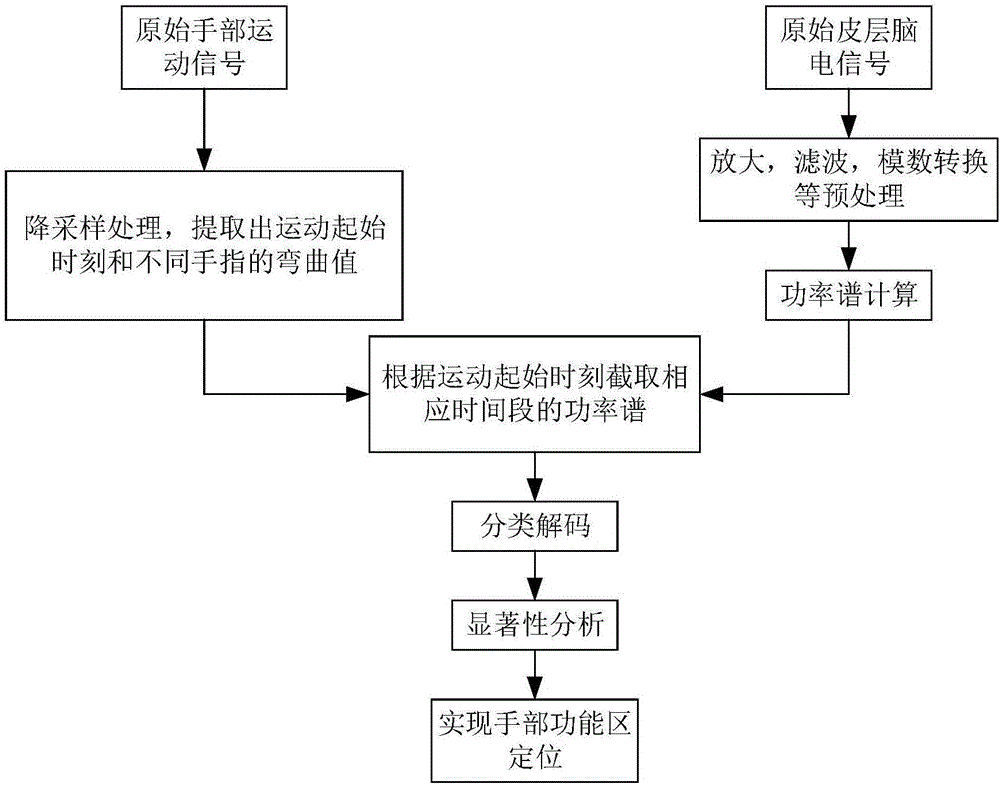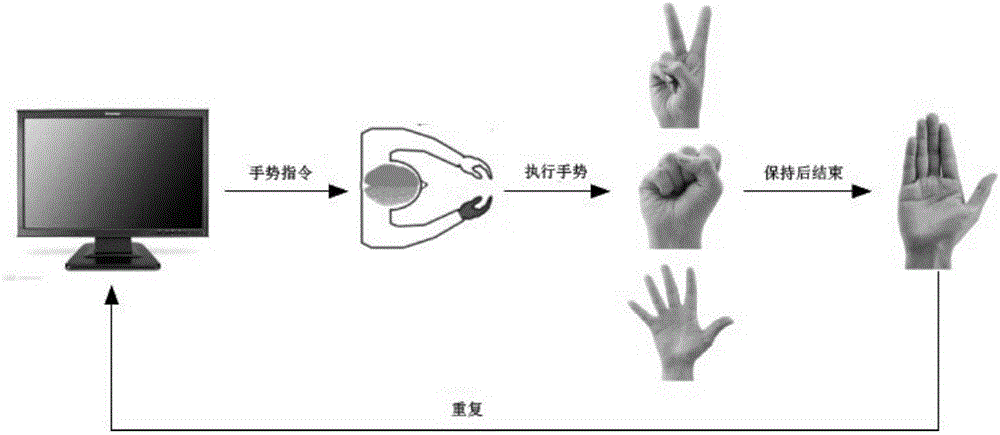Method and system for positioning cerebral-cortex hand functional region by applying electrocorticogram signals
An EEG signal and cerebral cortex technology, which is applied in the field of biomedical engineering, can solve the problems of epileptic seizures, low time resolution, and high inspection costs in patients, and achieve the effects of short data acquisition time, simple method operation, and avoidance of signal loss.
- Summary
- Abstract
- Description
- Claims
- Application Information
AI Technical Summary
Problems solved by technology
Method used
Image
Examples
Embodiment 1
[0047] see figure 1 In this embodiment, a system for locating hand functional areas of the cerebral cortex is provided. It mainly includes a prompt display 1, an ECoG electrode 2, a splitter 3, a signal acquisition subsystem 4, a data glove 5, and an analysis and control subsystem 6 (computer 6). The analysis and control subsystem 6 provides visual movement instructions to the subject by prompting the display 1. When the subject performs a specific hand movement according to the instruction, the analysis and control subsystem 6 passes the EEG signal acquisition subsystem 4 and the branch line The cortical EEG signal of the subject is collected from the ECoG electrode 2 of the subject on the device 3, and the analysis and control subsystem 6 synchronizes the hand movement signal through the data glove 5 at the same time; After a series of analysis and processing by the analysis and control subsystem 6, the cerebral cortex area corresponding to the hand movement is finally loca...
Embodiment 2
[0064] In this embodiment, a method for locating hand functional areas of the cerebral cortex is provided. Including the following steps, see the flow chart figure 2 shown.
[0065] Step 1: Acquire cortical EEG signals and hand movement signals respectively: when the patient performs three gesture tasks, use ECoG electrode 2 to complete the collection of cortical EEG signals, and use data glove 5 to complete the collection of hand movement signals at the same time . Among them, the gesture task process is as follows image 3 As shown: firstly, the patient is in a resting state, and performs corresponding gestures according to the random gesture instructions on the prompt display; then, the gestures are kept until the end of the prompt; after the execution of the gesture is completed, the patient returns to the resting state, waiting for the next prompt, The whole process is a trial. The course of an experimental task lasts about ten minutes. There were at least three exp...
PUM
 Login to View More
Login to View More Abstract
Description
Claims
Application Information
 Login to View More
Login to View More - R&D Engineer
- R&D Manager
- IP Professional
- Industry Leading Data Capabilities
- Powerful AI technology
- Patent DNA Extraction
Browse by: Latest US Patents, China's latest patents, Technical Efficacy Thesaurus, Application Domain, Technology Topic, Popular Technical Reports.
© 2024 PatSnap. All rights reserved.Legal|Privacy policy|Modern Slavery Act Transparency Statement|Sitemap|About US| Contact US: help@patsnap.com










